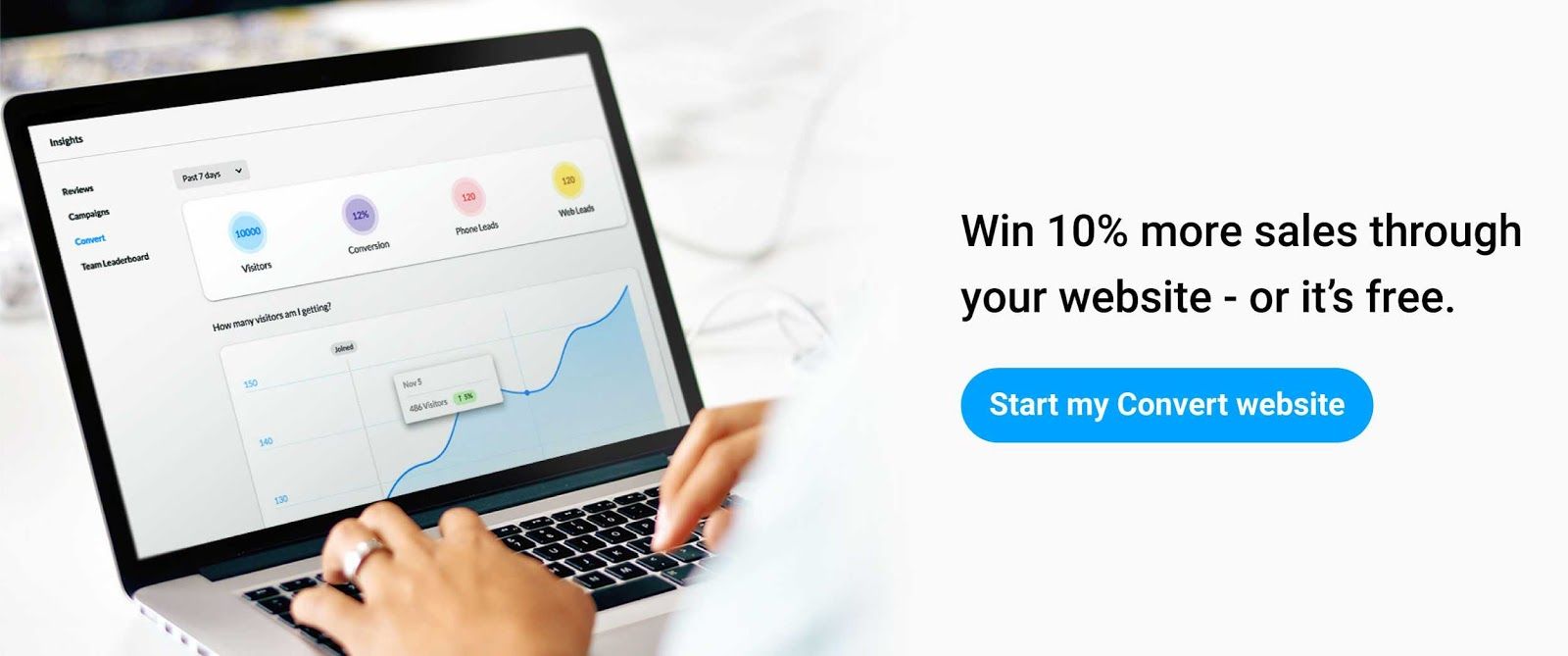How to Speed Up a Website and Measure Site Speed
Google PageSpeed Insights and How to Understand It
You've landed on a site that loads realllllly slow. And the only emotion you can possibly feel is frustration.
We all have short attention spans and are used to instant gratification. So when a website doesn't load pronto, you might assume something's wrong with the site or give up and leave.
With that in mind for your own website, consider that site speed impacts how long a person stays on your website.
Then Google announced page speed as a ranking factor for its search engine. From that point on, site speed was not only about customer experience but also a signal helping or hindering your visibility on Google.
Here we're going to look at why page speed is important and how to measure your site speed with accuracy on Google PageSpeed Insights. We'll also look at how PageSpeed Insights works and how to boost your load time to improve customer experience and search rankings.
How Important Is Page Speed for SEO
Why Is Page Speed Important?
First, let's look at why page speed is important and how it can help improve your business metrics.
Website speed refers to how long it takes a browser to load individual webpages, not a whole website. That's because browsers load pages one at a time as people access them.
The faster a page loads, the better. Slower load times negatively impact bounce rates and average time on page.
Bounce rate measures the percentage of visitors who leave a website without going to other pages. Time on page tells you how long visitors stay on a webpage.
Bad bounce rates and a low time on page result in less website sales for your business. Makes sense, right? The less people interact with your website, the less likely they'll fill out a form to contact your business or get a quote.
And with Google's announcement that page speeds are a factor for search rankings, slow websites won't rank as high on Google. This means less traffic comes to your website in the first place.
Bad bounce rates and low time spent on pages contribute to lower search rankings, and now poor page speed itself is a ranking factor. It's a double whammy.
So if you want a high-performing website to deliver leads for your company, page speed is definitely something to pay attention to.
How to Accurately Check Page Speed With Google PageSpeed Insights
Google PageSpeed Insights is a good tool to see if there is any major problem to solve.
It provides a score out of 100 of how well your website performs and a list of recommended ways to improve that score.
But do not fear if your score isn't considered "Good" (90/100 or above).
That's because your Google page speed test score is not a direct measurement of load time.
Confusing, I know.
Rather, PageSpeed Insights looks at multiple metrics that impact speed in their own way and gives a separate score for each one. Then it takes a weighted average of these individual scores to produce a final score out of 100.
However, you should take the final score with a grain of salt.
That's because how Google weighs the individual scores isn't going to be universally relevant for all websites. Plus, not everything that goes into the final PageSpeed score is important for your individual website in the first place.
For example, one of the metrics is Time to Interactive (TTI). TTI measures how long it takes for interactive elements of a webpage, such as clickable animations or multi-step chat boxes, to become ready for your website visitor to engage with.
But if interactive elements aren't the most important part of your website's homepage, they're not something to worry about if they bring down your Google PageSpeed score.
Say you run a local business. You'll want website visitors to learn about your company and the amazing services you offer. The basic text and images of your homepage should be more important than interactive elements for the first five seconds of the customer's website experience.
Google itself has acknowledged when explaining the Google website speed test that "a 'perfect' score of 100 is extremely challenging to achieve and not expected."
So while this report is useful to diagnose major issues, to achieve a perfect score is difficult. It's more helpful to pay attention to the suggestions that are easy to put in place.
Why Google PageSpeed Insights Isn't Perfect
Consider the following when running Google PageSpeed reports:
- PageInsights doesn't account for offline caching that can improve load times. What this means is that web browsers will store, or "cache," versions of your webpages so that when people revisit pages at a future time, the pages will load faster.
- Page speed is greatly dependent on a person's connection speed. So page speed will vary a lot for someone on a 3G mobile connection vs. 4G LTE and also a download speed of 10mbps vs. 100mbps on desktop.
- Page speed is also highly impacted by geographical location. Websites are stored on physical servers across and within different countries. Therefore, they load faster the closer someone is physically located to a server their browser is accessing. Google PageSpeed Insights doesn't allow you to choose a "test location" to analyze how fast a page loads in or near a given geographical area.
- As mentioned above, your page speed score isn't a direct measurement of actual load time from a customer experience perspective. Instead, the tool checks the extent to which certain measures that are considered "best practice" in performance optimization have been implemented on a page, evaluated on a scale of 0 to 100. While Google PageSpeed Insights is useful to evaluate whether certain best practices have been taken, not all of these measures are feasible or make sense for many sites—more on this below.
- Yes, Google Search uses page speed as a ranking factor. But it's not clear exactly how, since the final PageSpeed score doesn't directly reflect a page's load time. For SEO, it's more helpful to focus on the optimization recommendations, specifically the ones that can be implemented efficiently and which make sense for your website. PageSpeed Insights is infamous for making blanket recommendations out of context.
- Page speed checkers often only include "publicly" accessible factors. For example, Google, for security reasons, cannot see what the entire database is like. A good web developer will ensure a slim database and as little plugins as possible. So in reality your page load time will be much better than indicated in these reports.
I'd invite you to look at the scores for some of the biggest, most trafficked websites in North America:


As you can see, both received scores that Google labels as "Poor." Apple got a 34/100 for page speed on mobile devices and CNN’s was even worse at 0/100 at the time of our tests.
From our perspective, however, these sites perform great!
How to Read a Google PageSpeed Report
Let's take a closer look at how to analyze the results from a Google PageSpeed report by going through some of the common recommendations:
"Serve images in next-gen formats"
PageSpeed Insights used to simply recommend compressing large images, but now it goes as far as to suggest converting images to next-generation formats like JPEG 2000, JPEG XR and WebP, instead of the standard JPEG or PNG.
The issue here is that these formats are not mainstream yet. Not all browsers support them and they can be difficult to implement, making the effort inefficient.
For the time being, you're better off doing old-school image compressions. But many images would become only a few kilobytes smaller due to compression, in some cases even only bytes.
Google will also often list images that can't be compressed any further without severely impacting image quality. You'll maximize efficiency by focusing only on the largest of images.
Of course, compressing images is a very important factor for performance optimization so this should be done when the site is being built or anytime you update the images on your site.
When NiceJob designs Convert websites for lead generation, we always ensure a strong balance of image compression and image quality.

"Minify CSS" and "Minify JavaScript"
Minifying code, whether it be CSS, HTML or JavaScript, means reducing it to its bare essentials by removing any unnecessary characters.
Doing so is a good idea but the page speed you would gain by minifying CSS and JavaScript is usually minimal.
NiceJob Convert websites always have automated minification for all CSS, HTML and JavaScript, because every little bit helps!
"Eliminate render-blocking resources"
This recommendation suggests removing large CSS and JavaScript files (design elements) that aren't already inlined or deferred.
Inline code means code written directly in a webpage's HTML instead of being referenced to in a separate HTML file. Deferred code is pushed down the page's HTML.
Such "render-blocking resources" can lead to delays because they push other resources further down the "load queue" when the webpage loads.
It delays the First Contentful Paint (FCP)—one of the metrics that contributes to a webpage's PageSpeed Insights score. FCP refers to how long the first piece of visible content of a webpage (e.g., any text or image) is rendered by the browser. In other words, how long it takes for a visitor to actually see something on their screen.
But there are drawbacks to taking Google’s recommendations here into account.
For example, inlining CSS and JavaScript code prevents browsers from caching them. Remember above about how web browsers store versions of webpages for future visits. This means that your overall load time averaged out for all people will actually decrease over time once you account for repeat visitors.
And although it's a good idea to defer what Google calls "non-critical" code further down the page, PageSpeed Insights can't and doesn't determine what is critical vs. non-critical.
In a vast majority of cases, code listed in this recommendation is already critical. This means it needs to be included near the top of the HTML in order for the page to load properly at all.
"Serve static assets with an efficient cache policy"
Again, browsers will cache (save/store) versions of your website to speed up future visits.
A webpage's resource files have instructions to tell browsers when their cache should expire, after which point the browser will have to recache the file. Google here recommends increasing these expiration dates for improved speed efficiency in the long run.
It sounds reasonable, but there are still a couple of problems here.
As already mentioned, PageSpeed scores don't account for cached versions of websites, so implementing this recommendation won't even improve your score.
And sometimes Google suggests files that are not hosted on your site's server so you wouldn't even have influence over them. Examples can include files for Facebook and Google Analytics.
Another issue is that what constitutes an optimal expiration date—especially on a case-by-case basis for each resource file—is subjective. Of course, Google doesn't take context into account in the PageSpeed Insights report.
What to Do to Speed Up a Website
What Is a Good Google PageSpeed Score?
So what's important in Google PageSpeed? And how do you know what is a good PageSpeed Insights score?
Google themselves iterate that there is no ideal PageSpeed score: "site owners should just focus on making their sites fast for users instead of fixating on an ideal page speed."
What does this mean for an average website?
When it comes to looking at everything in the Google PageSpeed Insights report, John Mueller, Google's Senior Webmaster Trends Analyst, advises to not get overwhelmed by your score or every recommendation.
Instead, discover "low-hanging fruit on your webpages—so, things you can easily improve to really give your page a speed bump."
What is "low-hanging fruit"?
- Compress large images
- Minify CSS and JavaScript
- Avoid and eliminate unnecessary CSS and JavaScript
What Are Important Metrics in Google PageSpeed Insights?
Instead of getting caught up in your overall score, let's pin down some impactful individual metrics.\
The most insightful metrics to pay attention to are Speed Index, Largest Contentful Paint (LCP), First Input Delay (FID) and Cumulative Layout Shift (CLS).
That's a lot to take in, so let's look at them all individually and why they're important.
Speed Index is the best estimate for how fast the "above the fold" area (upper part) of the page loads.
It measures how fast everything becomes visible that a person sees on the part of their screen before scrolling down, so it's certainly something to pay attention to. It's one of the metrics included in your PageSpeed score and can be improved with the "low-hanging fruit" recommendations listed above.
However, moving forward, it's likely that the other three metrics will become the most important.
That's because starting in 2021, Google will consider "core web vitals" as separate ranking factors for SEO.
What are web vitals? According to Duda, "web vitals are metrics that help Google provide some unified direction on what it considers the foundations of an excellent website experience."
These vitals are what Google is isolating as the three most significant metrics out of six that currently determine PageSpeed score: LCP, FID and CLS.
- Largest Contentful Paint (LCP) measures how long it takes the largest piece of content (not the first but the biggest) to become visible on a person's screen. Since it's the largest, it's safe to assume that it's the last piece of visible content to load in almost all cases, so LCP is roughly equivalent to load time for all visible content on a webpage. This is why Google considers it to be more important than the previously mentioned FCP.
- First Input Delay (FID) is the reaction time of a webpage's interactive element to a person's first interaction (how long an interactive element responds to a person's first interaction attempt, such as a click, screen tap or keyboard entry). FID is important for page speed in Google's eyes because, as they say, "you don't want users' experience to suffer from frictions in their moment-to-moment interactions with your site."
- Cumulative Layout Shift (CLS) measures the extent to which a page's content elements shift or jump around a peron's screen while loading. On the surface, this might not sound like a symptom of page speed, but shifting content is often caused by overlapping issues. It causes friction to visitors, forcing their eyes to follow unexpectedly moving parts. Even worse is if, for example, people go to click on something only for that element to move to a different spot.
The same best practices apply for optimizing these metrics. Avoid overly large resource files, images & code and complex interactive elements & page-template designs—and your site should easily rank well from load times.
Website Speed Optimization for Your Small Business
In summary, page speed should be a priority for your website. Treat it seriously but be wary of chasing "good grades" on best practice site speed tools such as Google PageSpeed.
Some of the measures proposed by PageSpeed Insights are not going to be worth your time. Others bring only small changes that are not worthwhile implementing or would lead to insignificant improvements.
As a small business owner you should of course ensure all the basic best practices are followed. However, be cautious of taking all of the recommendations as written in stone.
Here are some handy guidelines:
- Don't rely on Google PageSpeed alone to assess the performance of your site. And don't obsess over your score if it's not perfect.
- Always read the recommendations carefully and assess if they are possible and worth your time. (You can always ask us here at NiceJob if you are unsure and we would be happy to discuss your report with you!)
- Keep your focus on speed for the website visitor and don't worry about chasing a grade. There is no single, universal metric for measuring a page's load time. The most important metrics are Speed Index, Largest Contentful Paint (LCP), First Input Delay (FID) and Cumulative Layout Shift (CLS).
And remember, one of the best ways to improve search rankings is far simpler and requires much less technical knowledge: reputation marketing. NiceJob's reputation marketing software offers the easiest way to get more reviews and share customer reviews across social media & your website.




